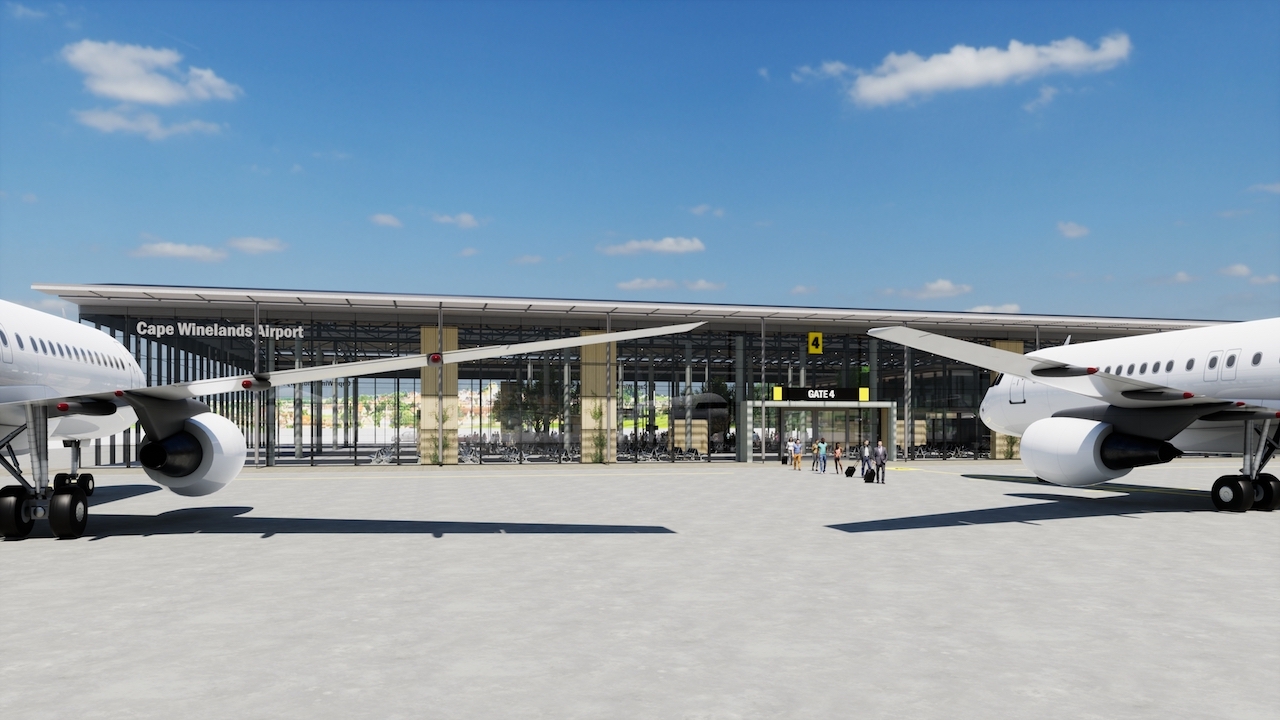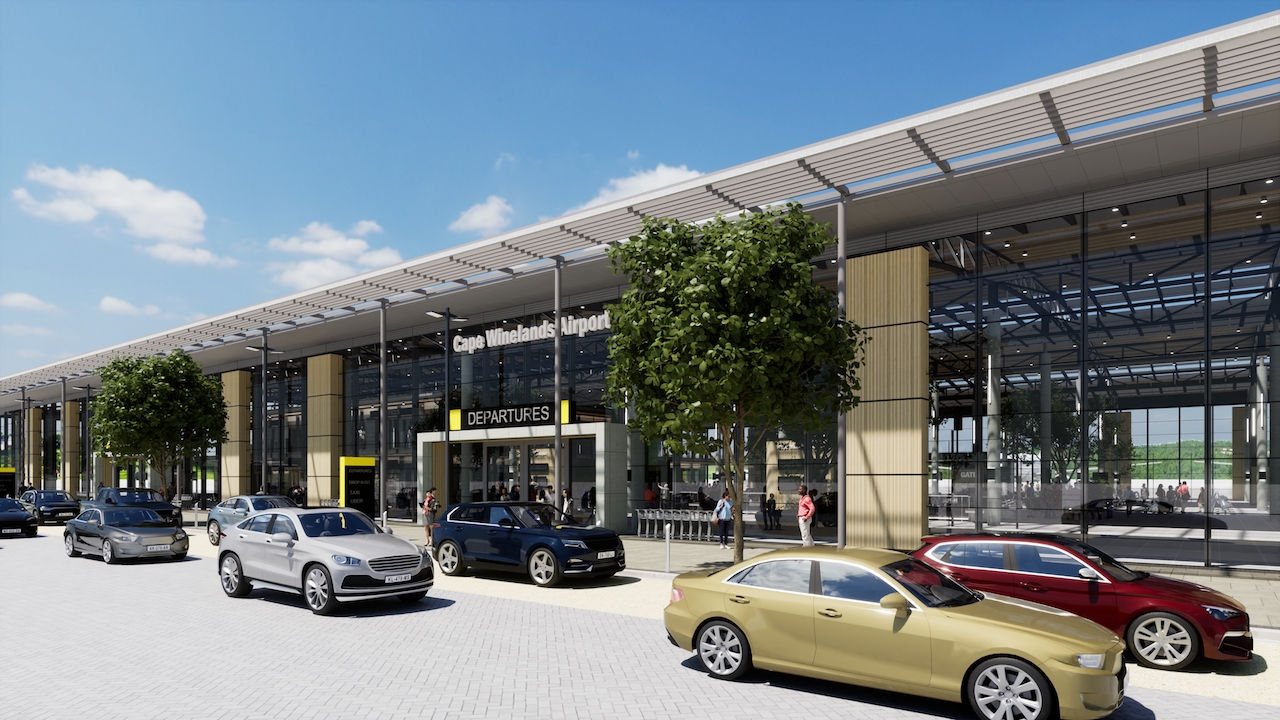The grape escape
Cape Winelands Airport is poised to play a pivotal role in South Africa’s aviation landscape.

PICTURE: Cape Winelands Airport
Previously known as Fisantekraal, Cape Winelands Airport is about to undergo a substantial transformation aimed at establishing it as a significant aviation hub in South Africa.
Located on the outskirts of Durbanville, the airport’s redevelopment will position it as a crucial alternative to Cape Town International Airport, approximately 45km away.
Having first opened in 1943, Cape Winelands has long been popular for light aircraft and private aviation, particularly training flights. In 2020, the airport was acquired by rsa.AERO, led by Nicholas Ferguson, the executive director of Cape Winelands Aero and executive managing director at rsa.AERO. With his background in accounting and property development, Ferguson immediately recognised the value and untapped potential of the airport, which features four runways, two of which are currently operational.
“We acquired the airport with plans to develop it and as we started unravelling the opportunities, its potential as an alternate airport to Cape Town became clear,” he explained to African Aerospace.
Currently, wide-body aircraft have to designate Johannesburg O.R. Tambo, which is 1,270km away, as an alternative airport in the event they can’t land at Cape Town. “This requires airlines to carry extra fuel, increasing carbon emissions and reducing payload capacity. By providing a closer alternate option, airlines can save substantial fuel costs and reduce their emissions,” stated Ferguson.
A study by Netherlands Airport Consultants (NACO) supports Cape Winelands’ vision. It indicates that while Cape Town currently handles 10 million passengers annually, this number is expected to double by 2050 to at least 20 million, with five million of these passengers accommodated by Cape Winelands Airport.
The airport’s expansion plans over the next three years include developing a 4F runway with a length of 3.5 km, capable of accommodating large aircraft, including the Airbus A380. Phase one, costing an estimated $300-$400 million will also feature a new parallel taxiway, apron and a 25,000 sqm terminal. This phase is expected to be completed by 2027.

Ferguson revealed: “The environmental assessment is due to be finalised early next year, with construction set to begin in Q1 2025 and a two-year build process anticipated.
“Additionally, plans include developing sites for FBOs, hotels, cargo facilities and other infrastructure in line with demand to ensure sustainable growth.”
The airport also has plans to be the “greenest” in the world, an “audacious, but achievable goal”, said Ferguson, that involves operating off-grid for electricity and water. The airport plans to install a solar array and has applied for a 1MW biodigester to generate electricity using grasses grown on site as a feedstock. Any excess power will be sold back to the grid, creating an alternative revenue stream.
“Landside, we’re also looking to develop a big public plaza, hotels, a museum and a wine experience centre where we can showcase the wines of the region, as well as parking and outdoor advertising to generate additional revenue.”
The airport is also embracing aviation’s digital transformation and is consulting with Saab and NACO to implement Africa’s first digital tower.
“It’s a huge project we’re undertaking, but one we’re committed to and which will stimulate economic growth in the region,” said Ferguson. He referenced the airport’s board featuring a stellar line-up of aviation experts as being key to that vision. It includes two former Airports Company of South Africa (ACSA) CEOs, the general manager of Cape Town International Airport, the former chief of the South African Air Force and the chairman on the board of Safair Operations.
Highlighting the airport’s broader vision, Ferguson concluded: “It used to be that the holiday started at the airport, not at the destination. We’ve lost that love of travel. We want to bring that back by building an airport that is welcoming, offers an experience and reflects a sense of place, integrating into the surrounding environment and showcasing Cape Town as a world-class tourism destination.”
Stay up to date
Subscribe to the free Times Aerospace newsletter and receive the latest content every week. We'll never share your email address.


